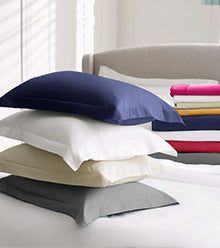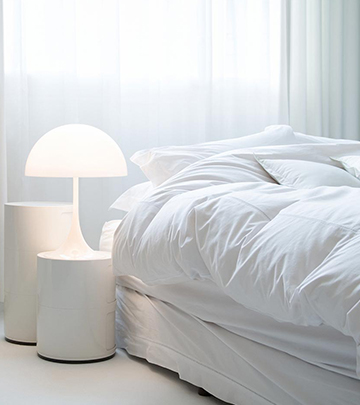A good night's sleep is essential for our health and well-being, and a clean mattress is crucial. However, accidents happen, and when a mattress gets peed on, it can be a challenging situation to deal with. This comprehensive guide explores the importance of proper mattress cleaning, common challenges with urine stains, immediate steps when accidents occur, deep cleaning methods, mattress-specific tips, and FAQs to address your concerns.
Why There is a Need for Proper Mattress Cleaning?
Proper mattress cleaning is crucial for maintaining a clean and healthy sleep environment. Over time, mattresses accumulate various contaminants, including dust mites, bacteria, allergens, and bodily fluids such as sweat and urine. These factors can affect the mattress's cleanliness and hygiene and your overall health and well-being. Here are some reasons why proper mattress cleaning is essential:
- Health Concerns: A dirty mattress can harbour dust mites microscopic insects that thrive in warm, humid environments and feed on dead skin cells. Dust mite droppings contain allergens that can trigger allergic reactions and exacerbate respiratory conditions such as asthma and hay fever. Regular cleaning helps remove dust mites and allergens, creating a healthier sleep environment.
- Odour Control: Over time, sweat, body oils, and other bodily fluids can seep into the mattress, leading to unpleasant odours. Additionally, the odour can be even more persistent and offensive if a bed has been peed on or stained. Proper cleaning and odour removal techniques, such as using baking soda or essential oils, can help eliminate unpleasant smells and keep your mattress smelling fresh.
- Stain Prevention: Accidents happen, whether spills, bedwetting, or pet accidents. If left untreated, stains can set into the mattress fabric, making them more challenging to remove. Regular cleaning and prompt treatment of stains can help prevent them from becoming permanent, prolonging the life of your mattress and maintaining its appearance.
- Prolonging Mattress Lifespan: A mattress is a significant investment, and proper maintenance is essential to ensure longevity. Regular cleaning helps remove dirt, debris, and moisture that can accumulate over time and contribute to the breakdown of mattress materials. By keeping your mattress clean and well-maintained, you can extend its lifespan and get the most out of your investment.
- Better Sleep Quality: A clean, fresh-smelling mattress can contribute to a more restful night's sleep. Knowing you're sleeping on a clean surface free from allergens and odours can help promote relaxation and improve sleep quality. By prioritising proper mattress cleaning, you can create a comfortable and inviting sleep environment conducive to a good night's rest.
In conclusion, proper mattress cleaning is essential for maintaining cleanliness, hygiene, and overall sleep quality. Regularly cleaning and maintaining your mattress can reduce allergens, eliminate odours, prevent stains, prolong its lifespan, and enjoy a healthier and more restful sleep experience. Shop mattress protector at the Inspire Homeware.
Common Challenges with Mattress Pee Stains
Dealing with mattress pee stains presents several common challenges that can make cleaning them daunting. First and foremost, urine stains are unsightly and carry unpleasant odours that can linger if not adequately addressed. Additionally, urine can seep deep into the mattress layers, making removing it challenging. Here are some of the most common challenges associated with mattress pee stains:
- Stubborn Stains: Urine stains can be stubborn and difficult to remove, especially if allowed to set into the mattress fabric. Traditional cleaning methods may not effectively lift the stains, requiring specific cleaning solutions and techniques.
- Lingering Odours: One of the most challenging aspects of dealing with mattress pee stains is eliminating the lingering odours. Even after the stain has been removed, the smell of urine can persist, affecting the overall freshness of the mattress and the sleep environment.
- Risk of Bacterial Growth: Urine contains bacteria that can thrive in moist environments, posing a potential health hazard if not adequately addressed. Failure to thoroughly clean and disinfect the mattress can lead to bacterial growth, increasing the risk of allergies and respiratory issues.
- Damage to Mattress Materials: Certain cleaning agents and techniques can cause damage to the mattress materials, mainly if they are made of sensitive fabrics like memory foam or have delicate stitching. Harsh chemicals and abrasive scrubbing can weaken the fabric and affect the structural integrity of the mattress.
- Difficulty in Drying: After cleaning, mattresses can take a long time to dry completely, mainly if they have absorbed a significant amount of moisture. Inadequate drying can lead to mould and mildew growth, further exacerbating the problem and compromising the mattress's hygiene.
To effectively address these challenges, it's essential to use the right cleaning products and techniques tailored to the specific needs of mattress pee stains. This may involve using gentle yet effective cleaning solutions, such as white vinegar and baking soda, to lift stains and neutralise odours without causing damage to the mattress materials. Additionally, thorough drying and ventilation are crucial to prevent moisture buildup and ensure the mattress is completely dry before use.
By understanding and addressing these common challenges, you can effectively clean and refresh your mattress after a bedwetting accident, restoring it to a clean and hygienic state for a restful night's sleep.
How Do You Clean Urine Out Of A Mattress? - Immediate Steps To Take
A. Blotting vs. Rubbing:
When dealing with fresh urine stains, avoid rubbing the area as it can spread the urine and set the stain deeper into the mattress fabric. Instead, gently blot the stain with a clean cloth or paper towel to absorb as much urine as possible.
B. Using Absorbent Materials:
After blotting the urine, sprinkle baking soda or cornstarch over the stained area to absorb any remaining moisture and neutralise odours. Let it sit for at least 15-20 minutes before vacuuming it off.
How Do You Deep Clean Urine Out Of A Mattress?
- Preparing the Cleaning Solution: Mix equal parts of white vinegar and water in a spray bottle. Vinegar is a natural disinfectant and odour eliminator, effectively removing urine stains and odours.
- Spraying or Dabbing: Spray the cleaning solution onto the urine-stained area or dab it using a clean cloth. Avoid saturating the mattress to prevent moisture from seeping into the mattress layers.
- Reaching Deep into Mattress Fibres: Use a soft-bristled brush or sponge to gently scrub the stained area, working the cleaning solution into the mattress fibres. Continue until the stain lifts, then blot the area with a dry cloth to absorb excess moisture.
- Addressing Odour Issues: To tackle lingering odours, sprinkle baking soda over the cleaned area and let it sit for several hours or overnight. Vacuum the baking soda off the mattress the next day to reveal a fresh-smelling surface.
Steam Cleaning: How and When to Use?
Steam cleaning is a highly effective method for deep cleaning mattresses and sanitising them without harsh chemicals. This technique uses a steam cleaner with a fabric attachment to penetrate the mattress fibres, effectively removing stains, odours, and bacteria. Here's how and when to use steam cleaning on your mattress:
Steam Cleaning:
- Preparation: Before starting the steam cleaning process, remove all bedding and linens from the mattress. Vacuum the mattress surface to remove loose debris, dust, or pet hair. This step helps prepare the mattress for thorough steam cleaning.
- Set up the Steam Cleaner: Fill the steam cleaner's reservoir with water according to the manufacturer's instructions. Attach the fabric cleaning tool suitable for mattresses. Ensure the steam cleaner is set to the appropriate temperature and steam intensity for mattress cleaning.
- Test in an inconspicuous area: Before proceeding, test the steam cleaner on a small, inconspicuous area of the mattress to check for any adverse reactions, such as discolouration or damage to the fabric. You can clean the entire mattress once you are confident that the steam cleaner is safe.
- Steam Cleaning Process: Hold the steam cleaner nozzle a few inches above the mattress surface and slowly move it across the entire surface, focusing on areas with urine stains or odour. The steam penetrates the mattress fibres deep, loosening dirt, grime, and bacteria. Pay extra attention to seams, crevices, and any areas of heavy soiling.
- Allow Drying Time: After steam cleaning, allow the mattress to air dry thoroughly in a well-ventilated room. Open windows and use fans or dehumidifiers to speed up the drying process. Avoid placing bedding or linens back on the mattress until completely dry to prevent mould and mildew growth.
When to Use Steam Cleaning?
- Bedwetting Accidents: Steam cleaning is beneficial for treating urine stains and odours on mattresses caused by bedwetting accidents. The high steam temperature helps break down and remove urine residue, leaving the mattress clean and fresh.
- Allergen Removal: If you suffer from allergies or asthma, steam cleaning your mattress regularly can help remove dust mites, allergens, and other microscopic particles that can trigger respiratory symptoms.
- Routine Maintenance: Incorporate steam cleaning into your mattress maintenance routine every 6-12 months to keep it clean, hygienic, and free from stains and odours.
Mattress-Specific Cleaning Tips
When it comes to cleaning mattresses, different types of mattresses require specific care to ensure effective cleaning without causing damage. Here are some mattress-specific cleaning tips to keep in mind:
- Memory Foam Mattresses: Memory foam mattresses are known for their comfort and support but require gentle cleaning to maintain quality. When cleaning a memory foam mattress that has been peed on, avoid using excessive moisture, as it can seep into the foam and cause damage. Instead, use dry cleaning methods such as blotting with a clean cloth and absorbent materials like baking soda to remove moisture and odours.
- Pillow-Top Mattresses: Pillow-top mattresses feature an extra layer of padding sewn onto the top surface, providing additional comfort. However, this added layer can trap moisture and odours, making thorough cleaning essential. When cleaning a pillow-top mattress, pay extra attention to the crevices and seams where urine can seep in and cause lingering odours. Use a gentle cleaning solution and a soft-bristled brush to clean these areas thoroughly, ensuring that all traces of urine are removed.
- Innerspring Mattresses: Innerspring mattresses are constructed with a support core of metal coils topped with layers of padding and fabric. While the metal coils provide support, they can also trap moisture if not cleaned properly. To clean an innerspring mattress that has been peed on, use a combination of blotting and gentle scrubbing to remove stains and odours. Avoid using excessive moisture, as it can cause rusting of the metal coils and compromise the integrity of the mattress.
- Latex Mattresses: Latex mattresses are made from natural or synthetic latex foam, known for their durability and resilience. Avoid using harsh chemicals or abrasive cleaning tools when cleaning a latex mattress, as they can damage the foam. Instead, use mild cleaning solutions such as water and mild detergent with a soft cloth or sponge. Rinse the mattress thoroughly and allow it to air dry completely to prevent moisture from getting trapped inside the foam.
Mattress Drying Tips
Proper drying is essential after thoroughly cleaning a mattress to prevent moisture buildup, mould growth, and lingering odours. Here are some tips to ensure your mattress dries efficiently:
- Air Circulation: Place the mattress in a well-ventilated area with good airflow. Open windows and doors to encourage air circulation, which helps speed up the drying process.
- Sunlight Exposure: If possible, place the mattress in direct sunlight. Sunlight has natural disinfecting properties and helps to eliminate odours. However, avoid prolonged exposure to direct sunlight, which can cause discolouration and damage the mattress fabric.
- Use Fans: Position fans around the mattress to facilitate air circulation and expedite drying. Point the fans towards the mattress surface to encourage moisture evaporation.
- Dehumidifiers: If the weather is humid or indoor humidity levels are high, consider using a dehumidifier in the room where the mattress is drying. A dehumidifier helps remove excess moisture from the air, speeding up drying and preventing mould growth.
- Flip and Rotate: Periodically flip and rotate the mattress during drying to ensure all sides are exposed to air circulation. This helps to prevent moisture from becoming trapped within the mattress layers.
- Patience: Allow sufficient time for the mattress to dry completely before using it again. Depending on factors such as humidity levels, airflow, and the cleaning method, the mattress may take 24-48 hours or longer to dry thoroughly.
FAQs
How often should I clean my mattress after a bedwetting accident?
It's recommended to clean the mattress immediately after a bedwetting accident to prevent stains and odours from setting in. Regular mattress cleaning every 3-6 months can help maintain cleanliness and hygiene.
Can I use bleach to clean urine stains from my mattress?
Bleach is not recommended for mattresses as it can damage the fabric and cause discolouration. Opt for milder cleaning solutions like vinegar and baking soda for effective stain removal.
Is it safe to use essential oils for odour removal?
Yes, essential oils like tea tree or lavender oil can be diluted with water and sprayed onto the mattress to freshen it up and neutralise odours. However, always patch-test a small area and use sparingly to avoid overpowering scents.
How long does it take for a mattress to dry completely after cleaning?
The drying time for a mattress can vary depending on factors like humidity levels, airflow, and the cleaning method used. On average, it may take 24-48 hours for a mattress to dry completely, so be patient and allow sufficient time for drying before using the mattress again.
Are there any DIY methods for mattress cleaning that I can try?
Yes, you can try DIY methods like using baking soda, vinegar, or hydrogen peroxide for stain removal and odour neutralisation. However, always test these solutions on a small, inconspicuous mattress area first to ensure compatibility and avoid damage.













Leave a comment
This site is protected by reCAPTCHA and the Google Privacy Policy and Terms of Service apply.